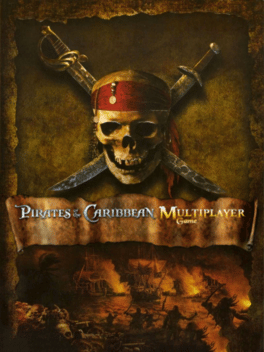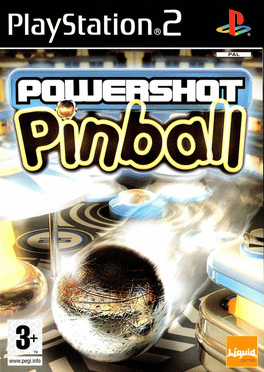New Games - Page 10243
-
Silent Hill Complete Set
2006
A collection which was released on Silent Hill movie Japanese premiere's day. The set was a limited edition which was distributed exclusively through the Konamistyle.jp site at the price of 7.400 yen. It includes: - Silent Hill (PSone Books) - Silent Hill 2: Saigo no Uta (Konami Palace Selection) - Silent Hill 3 (Konami Palace Selection) - Silent Hill 4: The Room (Konami the Best) - Five postcards in a plastic pouch, one for each game and one for the live action film - Film postcard of a slightly different format than the others - Projector light sealed in plastic with a piece of paper -
WWC: World Wrestling Championship
2006
Have you got what it takes to battle it out with the Pro Wrestlers of the World Wrestling Championship? -
Pirates of the Caribbean Multiplayer
2006
Pirates of the Caribbean Multiplayer is a massively multiplayer mobile game based on the series of films and the Disney theme park attraction of the same name. The game starts you off as an inexperienced captain of a pirate ship with no reputation, no gold and minimal knowledge of the seas around you. But don't despair, Mate! Build up your infamy score by creating alliances with other players, fighting fierce battles and embarking on all manner of adventure and exploration. You'll soon be one of the most feared pirates of the Caribbean! -
Pokémon Garden
2006
Pokémon Garden
2006
Pokémon Garden was an online Flash game hosted by Yahoo exclusively in Japan. The game essentially acted as a virtual theme park, where players could chat with each other, play mini-games, schedule rides on the "Pokémon Special Tour" attraction, and see previews for the then-upcoming Pokémon Diamond and Pearl Versions. -
Pool Paradise: International Edition
2006
Pool Paradise: International Edition is a Sports game, developed and published by Conspiracy Entertainment, which was released in Europe in 2006. The game is an European only re-release for the PlayStation 2 game Pool Paradise released in 2004 and it was the fourth game to be endorsed by professional snooker and pool player Jimmy White. -
Alex Rider: Stormbreaker
2006
star 4.5Based on Anthony Horowitz's series of teen spy movies and movie following adventure-seeker Alex Rider. Players embrace the role of Alex Rider to out-spy, outwit and out-cool evil in this thrilling action adventure. Featuring third-person stealth game play, fast-paced racing action, intense fighting and engaging, gadget-based mini-games, players can relive defining moments from the Stormbreaker movie and become the ultimate spy. -
Xexis
2006
-
Run Ronaldo Run
2006
Run Ronaldo Run
2006
"Run Ronaldo Run" is a flash game where you play as Ronaldo Nazario, and you have to escape from Messi. -
Doctor Who: Daleks v Cybermen
2006
Defeat the Human and Dalek forces so that we can upgrade this world. Upgrading is compulsory. Those incompatible for upgrade will be deleted. Traverse maps with a squad of Cybermen at your command. Take down all enemies and proceed to the next level without losing all your units. -
Jagged Alliance: Complete Edition
2006
This compilation includes: - Jagged Alliance Gold - Jagged Alliance: Back in Action - Jagged Alliance: Crossfire - Jagged Alliance 2 Gold - Jagged Alliance: Flashback -
Hi-iro no Kakera
2006
Hi-iro no Kakera
2006
An otome game created by Idea Factory and the first entry in the Hiiro no Kakera series. -
Terrawars: NY Invasion
2006
Terrawars: NY Invasion is a budget-priced first-person shooter that takes place in an alien-infested New York City. You play as John Armstrong, a medical student that's been drafted into the Army National Guard to fight the aliens. The game plays in standard first-person shooter fashion: Move through the level, kill all the aliens, and try not to get killed by them. In some levels, you'll meet allies who will fight the aliens alongside you. -
Nana: Subete ha Daimaou no Omichibiki!?
2006
Nana: Subete ha Daimaou no Omichibiki!? is a video game based on Nana released by Konami on July 6, 2006 for the PSP. Many of the voice actors from the anime voice their respective characters in the game. The game is different in many aspects from the first Nana game, such as characters in "chibi" form, and the game board setting. The setting is fashioned as a game board. A dice is provided for the player to move across the board. Gameplay is set up into several rounds, after every three rounds Blast or Trapnest perform live. The player can be friends with their favorite Nana characters, buy clothes, or decorate their room. Sabrina, Jackson Hole, and Apartment 707 are some of the many locations in the game. -
Powershot Pinball
2006
Powershot Pinball
2006
Powershot Pinball's a collection of 8 games from the classic to the fantastic. Four traditional games give players hours of bumper-bashing fun while exotic takes on tables such as "Island in the Night" bring the likes. Three modes of play, including: Adventure, Time Mode and Multiplayer. Range of playing environments featuring both the traditional and non traditional. Over 6 different table styles including Streets of New York, Deserted Island, Shipwrecked, Factory and harbour. Multi-player levels featuring dual and co-operative play. -
Jagged Alliance 2: Gold Pack
2006
star 7The small country of Arulco has been taken over by a merciless dictator - and only you can loosen the iron grip! Jagged Alliance 2 Gold Pack immerses you into an elaborate role-playing universe where you will interact with more than 150 characters, recruit your own band of soldiers and create your own custom mercenary to win back Arulco - not once, but twice! The perfect blend of strategy, role playing and tactical combat! -
Tekken: Dark Resurrection
2006
star 7The power of the greatest fighting dynasty... in the pal of your hands. Tekken: Dark Resurrection has arrived on the PSP system. Fight with new characters Lili and Dragunov or other favorites including Jin, Heihachi, and Armor King. -Wireless ad hoc battle with up to 2 players to prove who is the real champion. -Customize your character with twice the items and share your creation using the Ghost feature. -Play mini-games in ad hoc mode or individually for a change in the action. -Stunning graphics on 19 stages of pain. -
Ultimate Board Game Collection
2006
star 4Get Ultimate Board Game Collection, Strategy, Board Games game for PS3 console from the official PlayStation website. Know more about Ultimate Board Game Collection Game. -
Disciples II: Gallean's Return
2006
star 8.9Disciples II: Gallean's Return is a compilation edition that includes the base game, Disciples II: Dark Prophecy, plus the two standalone expansions Disciples II: Guardians of the Light and Disciples II: Servants of the Dark.



















